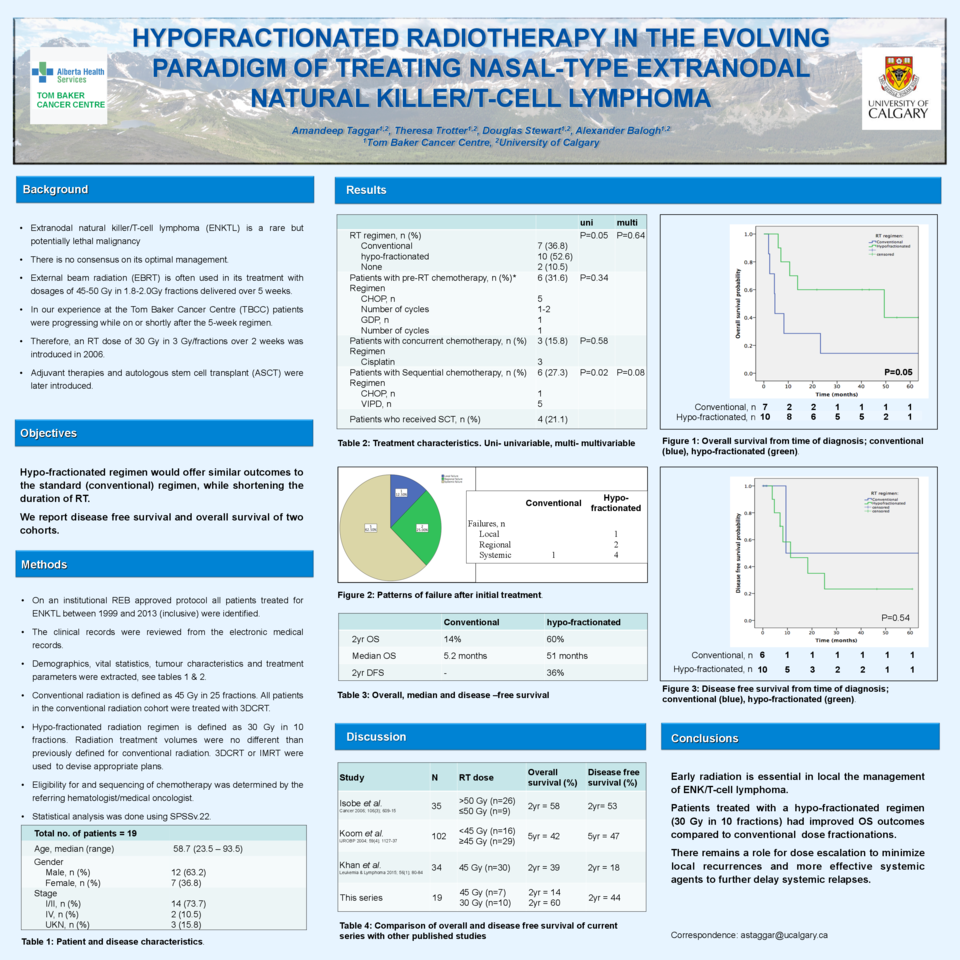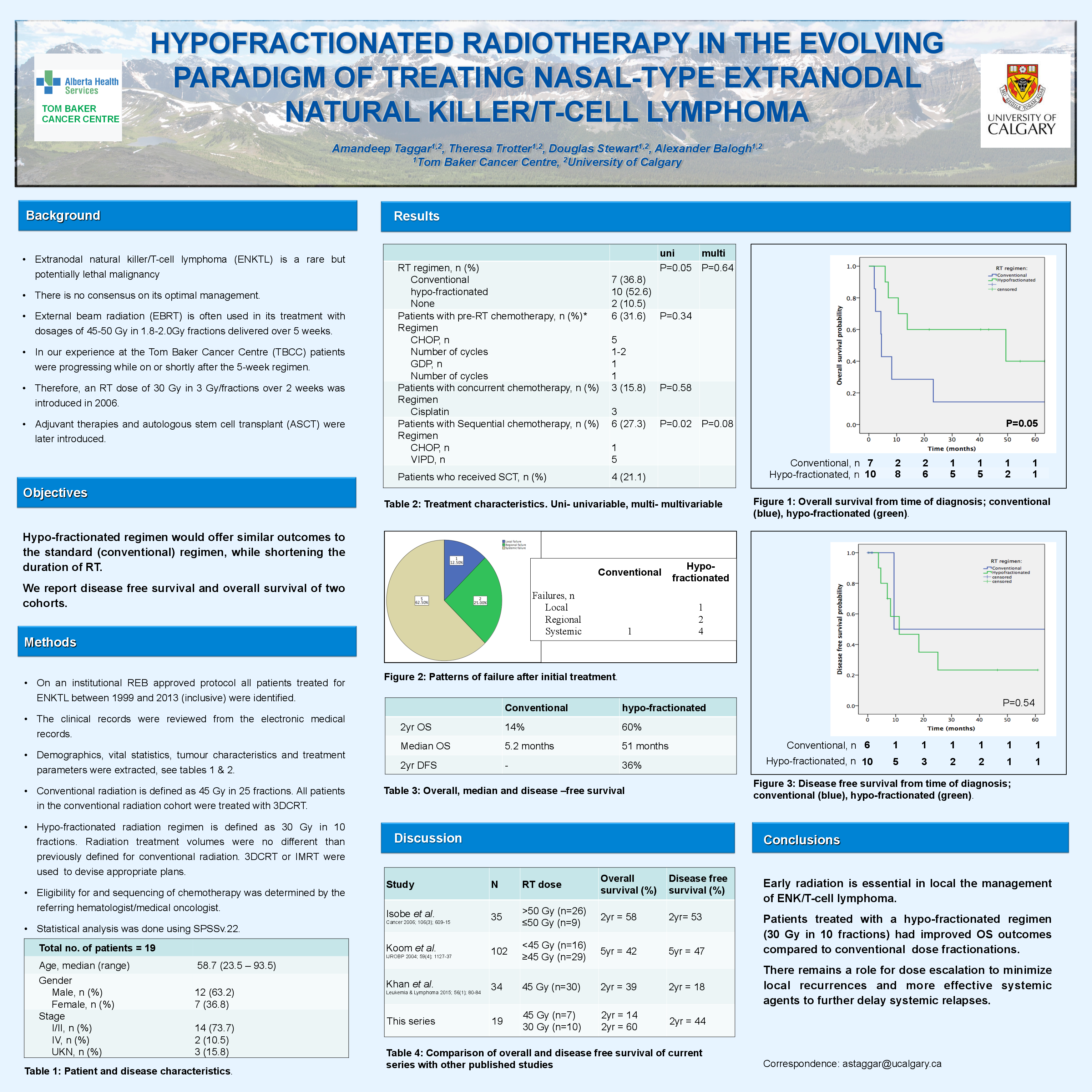Abstract
Purpose/Objectives: Extranodal natural killer/T-cell lymphoma (ENKTL) is a rare and lethal malignancy with no consensus on its optimal management. External beam radiation (RT) is often used in its treatment with dosages of 45-50 Gy in 1.8-2.0Gy fractions delivered over 5 weeks. At our institution, a RT dose of 30 Gy in 3 Gy fractions over 2 weeks was introduced in 2006. Adjuvant therapies and autologous stem cell transplant (ASCT) were later introduced. It was hypothesized that this hypofractionated regimen would offer similar outcomes to the standard regimen, while shortening the duration of RT, because patients were progressing while on or shortly after the 5-week regimen. We look to describe our results by reporting on disease/treatment characteristics and survival outcomes in a cohort of patients treated in the era of 45-50 Gy and then with 30 Gy.
Materials/Methods: The clinical records of patients presenting with ENKTL at our tertiary institution between 1999 and 2013 were retrospectively reviewed. Demographics, vital statistics, tumour characteristics and treatment parameters were extracted from the medical records. Results were examined using SPSSv.22 for both the descriptive analysis and survival. Non-parametric approaches including the Mann-Whitney U test was used to compare differences in outcomes between both groups.
Results: The records of n=19 with nasal-type ENKTL were identified. Median age was 58.7 years. Median follow-up was 10.8 months (Inter-quartile range(R): 4.4-43.9 months). Stage at presentation: 14 - stage I/II, 2 - stage IV and 3 - stage unknown. The observed median survival was 10.8 months. 2 year overall survival was 36%. N=17 received RT; n=10 received 30Gy in 10 fractions, n=1 received 35 Gy in 20 fractions and n=6 received 45 Gy in 25 fractions (of which 2 patients did not complete due to disease progression, and received 41.4 Gy in 25 and 36 Gy in 18 fractions). Among those patients who died, median time to death (MTD) was 7.2 months (R:5.4-29.8 months) for patients receiving the 30 Gy regimen versus 1.5 months (R:0.4-6.9 months) for those receiving standard dose-fractionation (p=0.05). In total, 12 patients received chemotherapy and 4 out of 12 subsequently received ASCT. All patients who proceeded to ASCT were treated with hypofractionated regimen. All patients who treated with RT plus ASCT are alive at a median follow-up of 42.4 months. N=7 of those receiving adjuvant chemotherapy relapsed, of which 2 had “in-field” recurrences. Median time to relapse was 12.4 months (R:6.5-19.4m) from diagnosis and 8.9 months (R:5.4-16.8 m) from the date RT.
Conclusion: Patients treated in the post 2006 era of our hypofractionated regimen with 30Gy/10 fractions had improved OS outcomes compared to traditional dose fractionations. There remains a role for dose escalation to minimize in-field recurrences and more effective systemic agents to further delay relapses.





